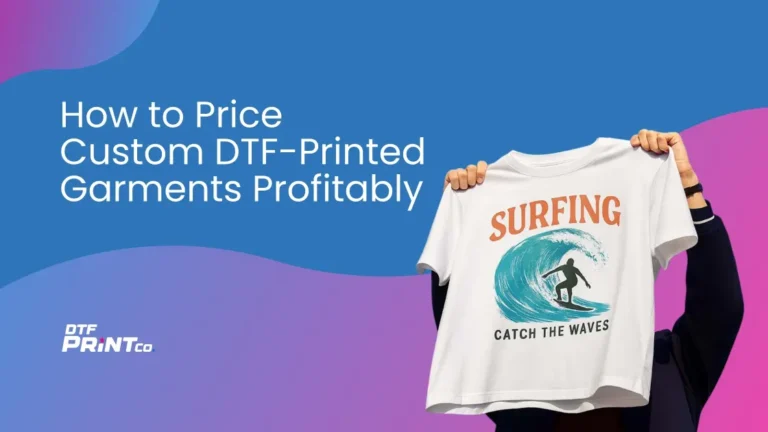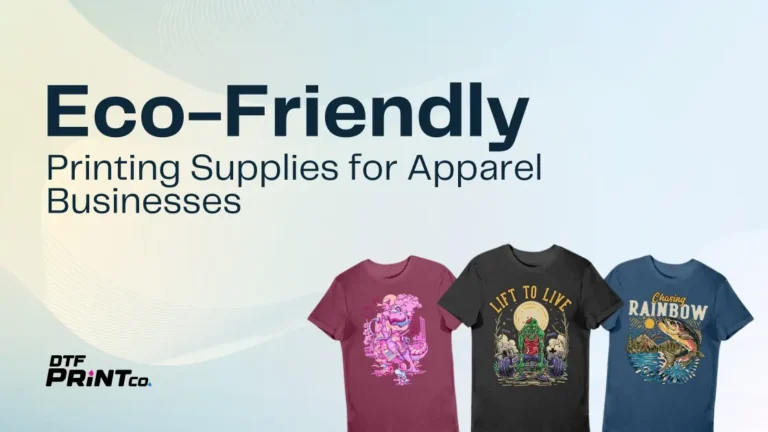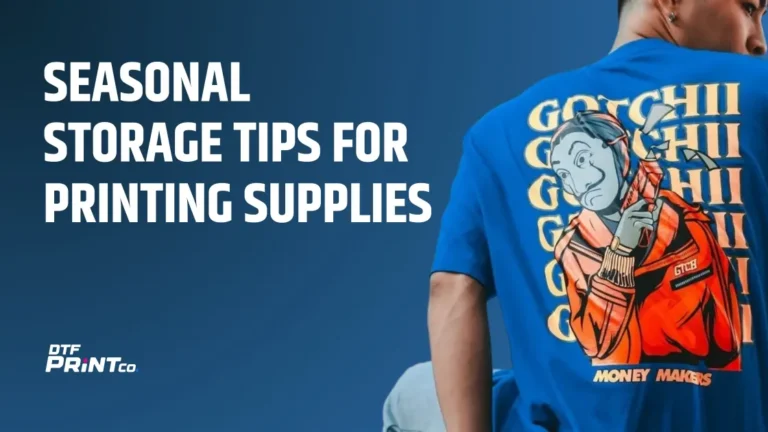With the rise of DIY projects and print-on-demand businesses, custom apparel and merchandise have become increasingly popular. Whether you’re creating designs for personal use or starting a small business, you may have come across several types of transfer methods.
The three most commonly used techniques in the crafting and custom printing world are Heat Transfer Vinyl (HTV), Direct-to-Film (DTF) printing, and Sublimation. Each of these methods offers distinct advantages and disadvantages, and knowing the best one for your needs can make a huge difference in the final product.
In this article, we’ll dive into the details of HTV, DTF, and Sublimation, so you can make an informed decision about which one works best for your projects.
What Is HTV (Heat Transfer Vinyl)?
HTV is a popular transfer method for beginners and hobbyists alike. It involves cutting vinyl sheets into your design, weeding out the excess material, and then applying heat to transfer the design onto your fabric.
How It Works
HTV requires a cutting machine like a Cricut or Silhouette to cut your design out of a sheet of vinyl. After the design is cut, the unwanted vinyl is “weeded” out, leaving only the design. Once the design is ready, it is applied to the fabric with a heat press. The heat causes the adhesive on the vinyl to bond with the fabric.
Best Used For
- Cotton shirts
- Simple logos
- Text-based designs
Pros & Cons
Pros:
- Easy to start: HTV is beginner-friendly and doesn’t require specialized equipment beyond a heat press and cutting machine.
- Versatile: Can be used on a variety of fabric types.
- Affordable: It’s cost-effective for smaller projects.
Cons:
- Limited color layering: While you can layer HTV, it’s not as versatile in terms of colors as DTF or sublimation.
- Time-consuming: Weeding and layering multiple colors can be time-consuming.
What Is DTF (Direct-to-Film)?
DTF is a relatively new printing method that uses a specialized printer to print your design onto a film, which is then transferred to fabric using heat.
How It Works
DTF printing starts with a special printer that prints your design onto a film. Once printed, a powder adhesive is applied to the design. After the powder is cured, the design is transferred to the fabric using a heat press. This method can handle full-color designs, including intricate details.
Best Used For
- Full-color, detailed prints
- All fabric types, including cotton, polyester, and blends
Pros & Cons
Pros:
- Vibrant prints: DTF provides photorealistic, full-color prints that stand out.
- Works on dark fabrics: Unlike sublimation, DTF can print on both light and dark-colored fabrics.
- Durability: The prints are generally very durable and long-lasting, especially when applied correctly.
Cons:
- Needs specialized equipment: DTF requires a DTF printer and powder adhesive, making the initial investment higher.
- Medium difficulty: It requires more setup and expertise compared to HTV.
What Is Sublimation?
Sublimation is a unique transfer method where the ink is turned into a gas and bonds directly with polyester or a polymer-coated surface, resulting in a print that is part of the fabric.
How It Works
Sublimation involves printing your design onto special transfer paper using sublimation ink. The transfer paper is then placed on the fabric or object, and heat is applied. The heat causes the ink to sublimate (turn to gas) and bond with the fibers of polyester or polymer-coated items like mugs or tumblers.
Best Used For
- White or light-colored polyester fabrics
- Mugs, tumblers, and other polymer-coated surfaces
Pros & Cons
Pros:
- No feel on fabric: The ink becomes part of the fabric, leaving no raised texture, making it ideal for soft, breathable designs.
- Vibrant colors: Sublimation offers high-quality, vibrant, and durable prints, especially on polyester fabrics.
- High durability: The print is permanent and will not fade or peel as long as it’s applied correctly.
Cons:
- Limited fabric compatibility: Sublimation only works on polyester or specially coated surfaces, limiting its use.
- Requires specific blanks: Unlike HTV or DTF, which can be applied to a variety of fabrics, sublimation is limited to certain materials, like polyester or specially coated items.
Side-by-Side Comparison Table
| Feature |
HTV |
DTF |
Sublimation |
| Fabric Compatibility |
Cotton, blends |
All fabrics |
Polyester/light colors |
| Color Range |
Limited layers |
Full-color, photorealistic |
Full-color, no white ink |
| Durability |
Moderate |
High |
High (on proper material) |
| Required Equipment |
Cutter, heat press |
DTF printer + press |
Sublimation printer + mug press/oven |
| Application Ease |
Easy |
Medium |
Medium |
| Best For |
Simple shirts |
Full-color, detailed prints |
Branded merch, mugs |
Which Transfer Method Is Right for You?
Choosing the right transfer method depends on your goals, the materials you’re working with, and your desired output. Let’s break it down:
Hobbyist or Beginner – HTV
If you’re just starting out and want to make custom shirts or simple designs, HTV is a great option. It’s easy to use and requires minimal investment. Plus, it’s ideal for personal projects and small batches.
Want to Sell Colorful Custom Shirts – DTF
If you’re looking to create vibrant, detailed designs that stand out, DTF is a fantastic choice. It works on a wide range of fabrics and can create photorealistic designs, making it perfect for full-color custom shirts or apparel.
Targeting High-Quality Full-Color Merch – Sublimation
Sublimation is the way to go if you’re focusing on creating high-quality, full-color merchandise. It’s particularly great for t-shirts made from polyester, as well as items like mugs and tumblers. If you want designs that feel soft to the touch and won’t fade, sublimation is your best bet.
Final Thoughts
There’s no one-size-fits-all answer when it comes to transfer methods. It all comes down to your materials, goals, and budget. Whether you’re a hobbyist just starting out, a small business owner looking to create vibrant custom shirts, or someone focused on creating high-quality merchandise, there’s a transfer method that’s right for you.
Consider starting with one method, then expanding as you grow. Whichever option you choose, you’ll be well on your way to creating amazing custom designs!
FAQ
Is DTF better than sublimation?
DTF offers full-color, photorealistic designs and works on a wider range of fabrics, including dark colors, making it more versatile than sublimation. However, sublimation provides longer-lasting prints with no feel on the fabric, but it’s limited to polyester and coated surfaces.
Can you use HTV on mugs?
HTV can be used on mugs, but it requires careful application since it’s typically designed for fabrics, not hard surfaces. For mugs, a specialized heat press for ceramics is necessary to achieve proper adhesion.
Which transfer lasts the longest?
Sublimation generally lasts the longest as the ink bonds with the fabric fibers, resulting in a permanent design that won’t peel or fade over time. DTF also offers durable results, but HTV may wear down or peel over time, especially with frequent washing.
Do you need a Cricut for HTV?
While a Cricut machine is not strictly necessary, it makes cutting and weeding HTV designs much easier and more precise. You can also use other cutting machines like Silhouette, but Cricut is a popular choice for many crafters.






